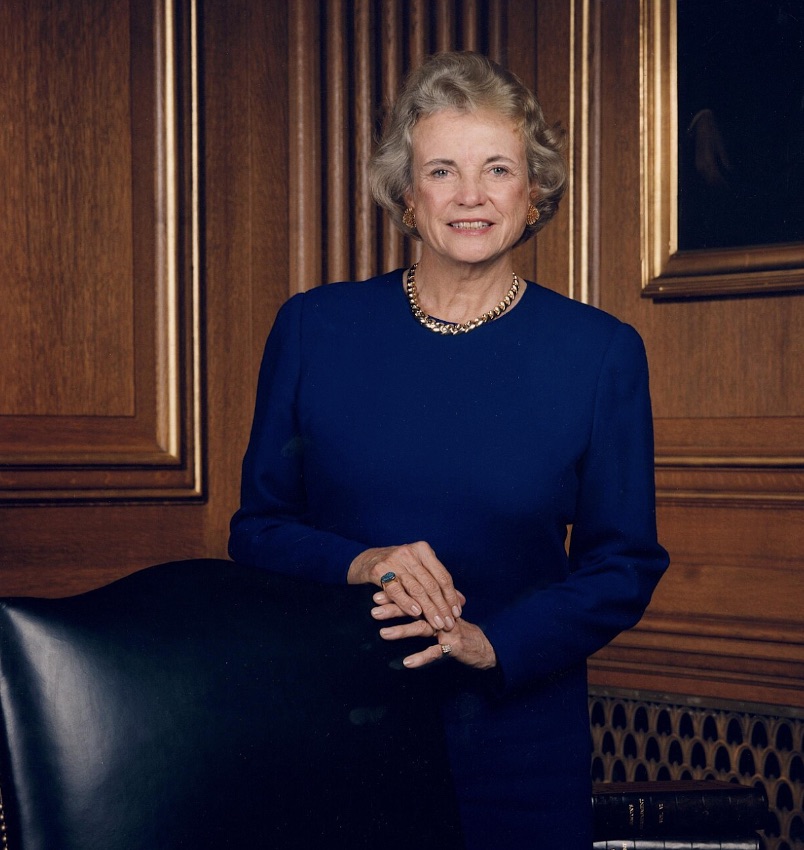Sandra Day O’Connor, the first woman to serve on the United States Supreme Court, died on Friday, December 1 “of complications related to advanced dementia, probably Alzheimer’s, and a respiratory illness.” She was 93.
While on the campaign trail for the 1980 presidential election, candidate Ronald Reagan, in an effort to sway female voters, promised to appoint a woman to the Supreme Court in the event of a vacancy. When Justice Potter Stewart resigned in 1981, Reagan’s opportunity to honor this promise arose, and he nominated O’Connor to the Court. Her nomination, watched by over 100 million Americans, went uncontested in the Senate Judiciary Committee, and she was confirmed with a unanimous 99-0 vote.
Her path to the court was anything but ordinary. In the Court’s recent press release, Chief Justice John Roberts described her as “a daughter of the American Southwest.” She grew up in Arizona but soon went to live with her grandmother in Texas for better schooling. She completed her bachelor’s degree at Stanford University and graduated in 1952 from Stanford Law School having completed her degree in two years instead of the usual three and ranking third in her class.
Despite her incredibly impressive qualifications, O’Connor struggled to find a job after graduating from law school—law firms were simply not hiring women. According to the Smithsonian’s Lisa Graddy, she once “interviewed for a job as a lawyer, only to be offered a position as a legal secretary.”
O’Connor eventually found a position as Deputy San Mateo County Attorney in California and later followed her husband to work as a Civilian Attorney in Germany. When she returned to Arizona in 1958, she became involved in local politics. She served as the Attorney General of Arizona and an Arizona State Senator before she was appointed to the Arizona State Court of Appeals.
During her quarter-century on the Supreme Court, she was called “the most powerful woman in America.” Although she hated the term, she served as a decisive “swing vote” in many cases—breaking the tie in many 5-4 decisions. The Court was sometimes even referred to as the “O’Connor Court,” despite William Rehnquist being the Chief Justice.
Some of O’Connor’s most influential cases dealt with abortion and affirmative action, issues that continue to remain on the Court’s docket today. Her vote decided the 1992 case Planned Parenthood v. Casey to reaffirm the 1973 decision from Roe v. Wade and co-wrote the opinion. She also wrote the opinion for another landmark 5-4 case, Grutter v. Bollinger (2003), which protected affirmative action. Much of her work has been undone in the past two years with Dobbs v. Jackson Women’s Health Organization (2022) and Students for Fair Admissions v. President and Fellows of Harvard College (2023) cases.
Unquestionably, O’Connor has opened doors for women in law. At Stanford Law School, she was one of 5 women in a class of 112; by 1986, almost half of Stanford Law students were women. Forty years after becoming the first woman on the Supreme Court, which did not even have a women’s bathroom when she began her term, four of the nine present Justices are women.
Justice O’Connor’s remarkable journey from an Arizona ranch to the Supreme Court is a testament to her intelligence, commitment, and resilience. Her legacy is one of hope and empowerment, inspiring generations to strive for excellence and surpass any obstacles that stand in their way.


